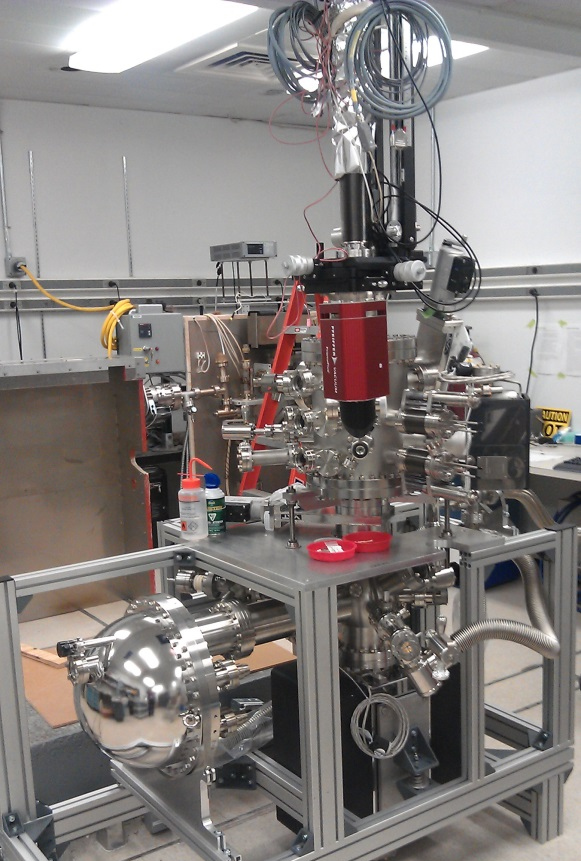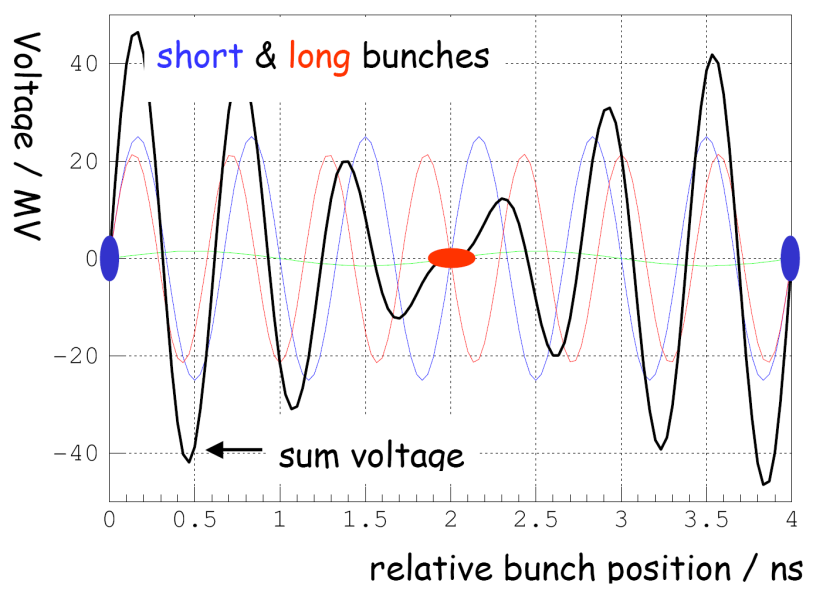Department Accelerator Operation, Development and Technology
Activities of the Institute "Accelerator Physics" in the POF III Programme supported by the User Platform "Operation Accelerator BESSY II"
Topic 1: Accelerator Research and Development (ARD)
The institute of Accelerator Physics, G-IA, participates in the Helmholtz Research Program 'Matter and Technology' on the topic 'Accelerator Research and Development'. This covers the subtopics ST1 'Superconducting RF Technology' and ST3 'Picosecond and Femtosecond Electron and Photon Beams'. The activities in ST3 are supported by the user platform 'Operation Accelerator BESSY II', NP-ABS. The focus is put on the realization of the test facility bERLinPro and the user facility upgrade BESSY VSR for short, high-current electron bunches. Emerging questions regarding the reliability and stable operation of these concepts are addressed explicitly.
ST1 - Superconducting RF Technology
Optimized for efficient acceleration and geometry, SRF cavities enable new accelerator applications with their very low dissipated power. Many of these applications rely on cw high gradient rf fields, high average power and most brilliant particle beams. CW FELs, ERL-based accelerators and short-pulse operating storage rings are possible examples. In this subtopic, the G-IA contributes to the high brightness electron beam teststand GunLab and bERLinPro being part of the future ARD distributed test facilitiy.
Cathode Development
- Development recipes and handling techniques for photocathodes
- Performance characterization in test beamlines
- Long-term lifetime studies
Not only the the RF system determines the overall performance, but also a well suited beam with small occupied 6D phase space has to produced inside a RF gun. A dedicated program, established 2009, presently investigates normalconducting photocathodes. It includes the cathode fabrication in special preparation chambers in which simultaneously the key parameters are analyzed during production. Also the handling techniques and the final characterization in terms of quantum efficiency, response time and lifetime in a real test environment will be investigated.
SRF Photoinjector Structures
- Standardized transport and mounting system for NC cathodes in SC environment
The photocathode transportation from a depot box into a electron gun module and the insert system of the RF cavity are a critical aspects. Poor handling, contamination and abrasion produce dust particles which decrease the performance of the photocathode itself and/or of the SRF resonator. A standardized system for all participating facilities is under design.
Controlling Dark Current / Unwanted Beam
- Study of intrinsic field emission from photocathodes
- Characterization of dark current at teststands
- Characterization of unwanted beam during high current cw operation
Miscellaneous matter on the photocathode or resonator surface have negative influence in a high-field environment acting as origins of field emission. Also intrinsic properties and fabrication errors produce so-called Dark Current (unwanted with respect to the high brightness electron beam) which cause potentially permanent damage to the accelerator. The characterization and controlling of such an Unwanted Beam is a crucial part of G-IA's studies.
Beam Characterization
- Development and implementation of new diagnostic for detailed injector characterization
- Demonstration of lowest cw beam emittance
- Fast diagnostic-based cw beam stabilization schemes
Using photocathode SRF electron guns, electron beams with a very low emittance and high cw current can be produced. To demonstrate these properties new diagnostics need to be developed, an example of which would be a reliable and fast beam-based stabilization scheme.
CW SRF Current Limit
- Characterization & First Beam Tests of bERLinPro and BESSY VSR Accelerating System
- High current operation of L-Band System in bERLinPro and BESSY VSR
Through the construction of bERLinPro and BESSY VSR at HZB the SRF system will need to be fully characterized in terms of high current operation starting from the commissioning phase with the first beam. Understanding the operation performance and finding out the limitations will help to significantly improve such systems.
ST3 - Picosecond and Femtosecond Electron and Photon Beams
The generation of pico and femto-second photon beams is one of the most important issue for radiation based light sources. Creating very short photon pulses using accelerators typically requires electron bunches with the same spatial and temporal dimension. Studying the underlying mechanisms, developing suitable diagnostics and controlling these electron beams in a stable way are a basic fields of research.
Beam Dynamics and Photon Sources
- Coherent Radiation in Storage Rings (collective instabilities)
- Development of Advanced Photon Sources
The shorter the electron bunches become, the more intense, high-frequency shifted coherent radiation is emitted and interacts on the same bunch or other bunches degrading its internal structure (micro-bunching instability). With the existing storage rings BESSY II and the Metrology Light Source MLS collective instabilities caused by the emission of coherent synchrotron radiation can investigated and modeled in detail to predict the impact on new advanced high current photons sources, namely the upgrade BESSY VSR and bERLinPro.
Stability, Controls and Synchronization
- Beam studies with high charge for multi-user operation in circular accelerators (achieving control and stable user operation for ultra-short bunches)
- Integration of high data rate detector system for precision control of ps-fs high repetition rate accelerators
Short electron bunches for photon user facilities require precise control and extreme stability of RF systems in both amplitude and phase. For low current FELs, like FLASH, such systems are presently available. For the upcoming high current cw SRF machines these technologies require further development. In addition suitable high data rate detector systems for precision control are going to be integrated in BESSY VSR and bERLinPro.


